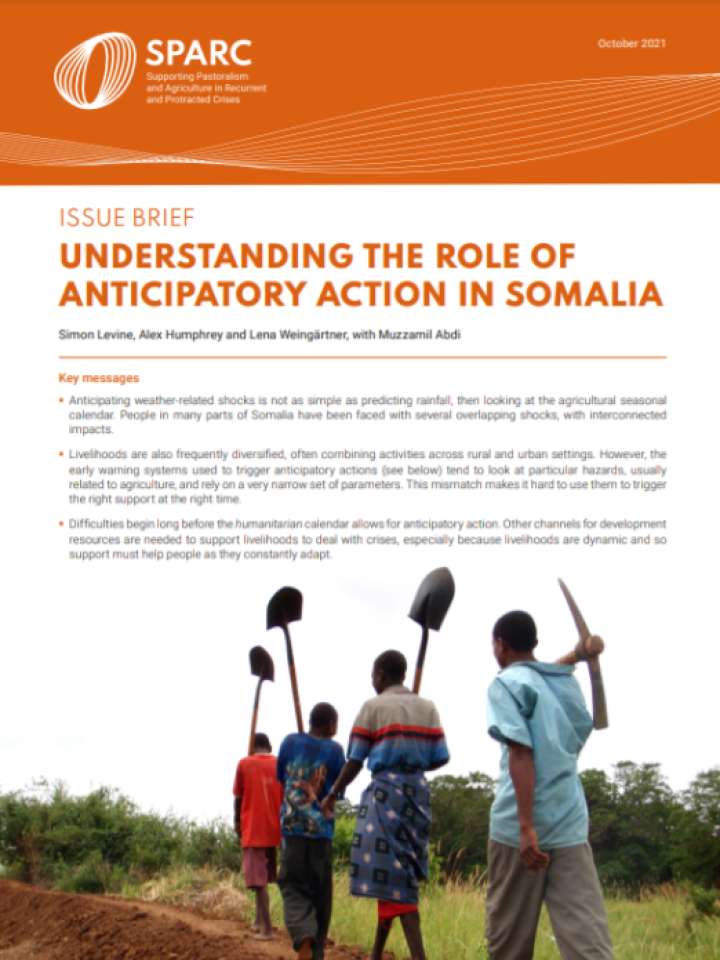Understanding the role of anticipatory action in Somalia
This brief is the first part of a series highlighting learnings that are emerging from a longitudinal study on anticipatory action in Somalia. Over the past couple of decades, more attention has been paid in the humanitarian sector to the possibility of giving assistance based on the expectation that a crisis is coming, but before humanitarian needs are severe. ‘Anticipatory action’ describes how people facing possible crises can anticipate and act. The discussion within the aid sector is better if it is not exclusively inward-looking, about the aid, but can instead focus on what everyone – affected farmers, pastoralists, businesses, local and central government, service providers and aid actors – could do with sensible anticipation and forward planning. So far, only a limited number of anticipatory-action aid responses have been used. A few shocks have presented a need for specific mitigating interventions.
This paper indicates the extent of livelihood difficulties in the surveyed communities. The COVID-19 pandemic initially affected communities economically as strict measures constrained livelihoods. Fears of the disease spreading became more significant later when the spread became more palpable. Remittances, which provided a lifeline for residents, shrunk as the global economy slowed. Meanwhile, a combination of locusts and poor water reliability continued to decimate crops. Livestock also suffered. Concerns over terrorism and political instability were present albeit more minor. In response to the multiple shocks and in line with anticipatory action, there is a great need to equip locals with more reliable forecasting strategies to bolster indigenous knowledge and traditional forecasting. Other reactions to stresses and shocks will be explored more as the season progresses.
Explore further
